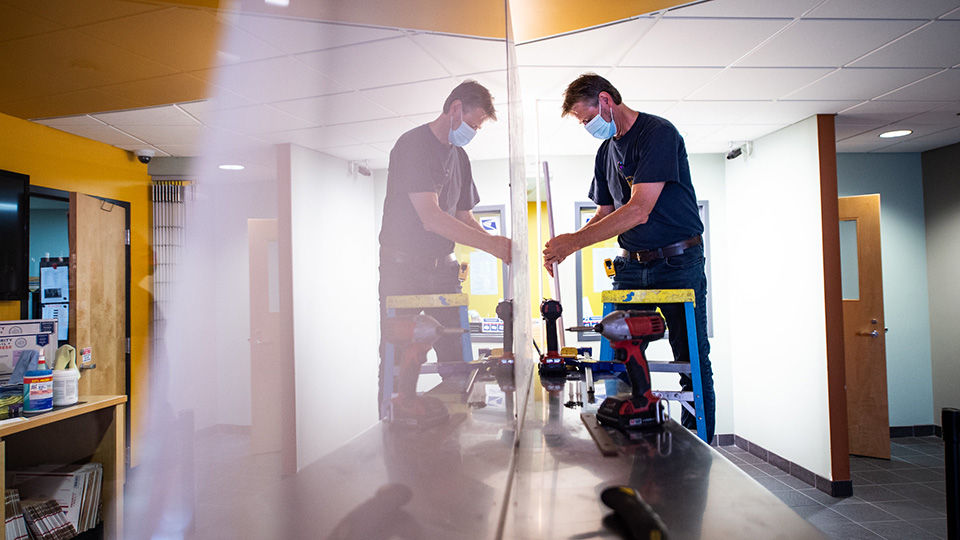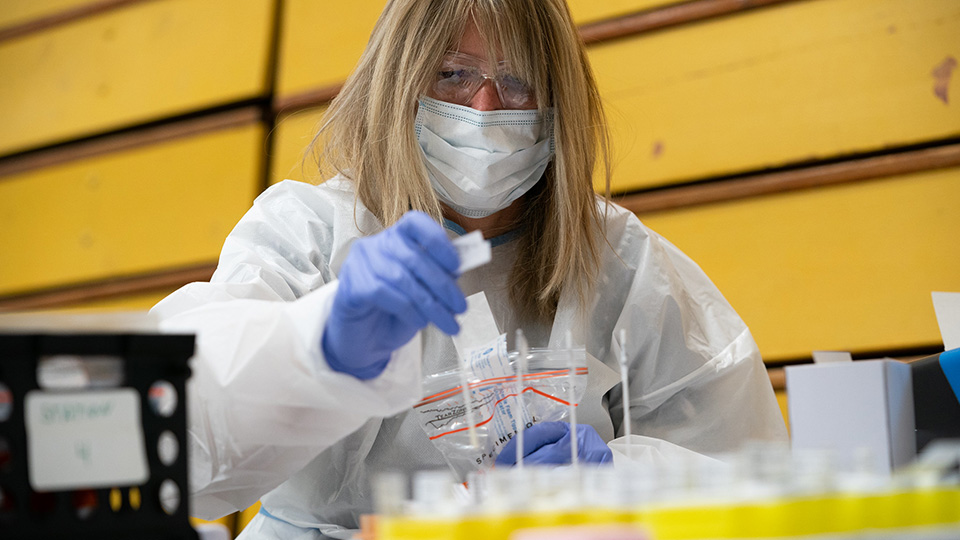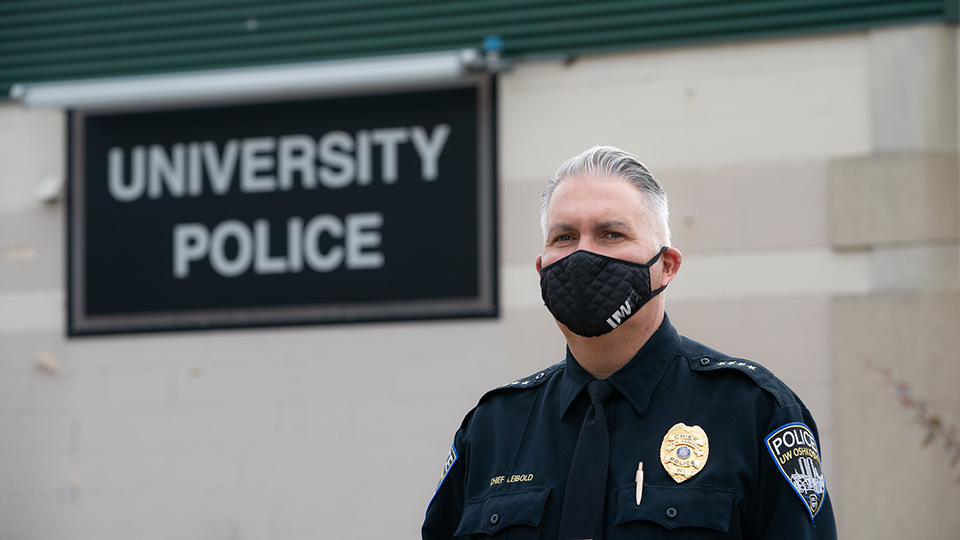There’s far more to policing than fighting crime.
Like, say, fighting viruses, for instance.
Kurt Leibold certainly has learned this in his more than four and a half years as University of Wisconsin Oshkosh Police Chief. As chair of the Emergency Operations Committee—the team of 14 representatives from across the Oshkosh campus—Leibold continues to lead what has been a successful battle against the spread of the coronavirus at the University.
Despite the unprecedented circumstances, Leibold is uniquely situated to meet the moment.
“It really is about the Emergency Operations Committee (EOC) and incident command,” Leibold said. “That’s where police are skilled. I trained for this most of my career. When something happens, we understand the hierarchies that come into play in handling an emergency situation.”
On first glance, it might not seem like the police chief would be key in a university’s operation to contain a virus. And that’s not how it’s working on every campus. But eight months into the pandemic the strategy is paying off.
“So many members of the UWO community are transcending their everyday roles and making additional contributions and sacrifices as we carry out our mission in the midst of the pandemic,” Chancellor Andrew Leavitt said. “Chief Leibold exemplifies this, and we continue to benefit from his rich career experience, his predisposition to partnership and his genuine care for this institution’s safety, supports and continuity.”

Part of the plan drawn up in the summer to slow the spread of the coronavirus on the UWO campuses included the addition of Plexiglas barriers at strategic spots around campus that typically require face-to-face interaction.
Made for the moment
Before coming to Oshkosh, Leibold spent 26 years with the Milwaukee Police Department, having retired there as assistant chief of police. During his career he ran various departments, from homicide to internal affairs to communications, and led several task forces, including one that captured a serial killer who’d been active in the city for decades.
Those roles, of course, didn’t stray into pandemic control—but there was a lot of teamwork, a lot of moving parts and many high-risk situations.
“The beauty of a task force is you have a major problem that you have to solve quickly,” he said. “You bring in subject matter experts—which is what we did here on campus.”
That assembling of experts also didn’t happen for a first time when COVID-19 made its way to Wisconsin. In fact, it wasn’t even the first time a task force had to come together because of a virus on the UWO campus.
In 2018, about two years into Leibold’s tenure as police chief, the rapid spread of a highly contagious norovirus sickened dozens of students. The EOC was activated and met daily for months, working hard to mitigate the spread. This came after Chancellor Andrew Leavitt moved the emergency operations responsibilities out of the student affairs office and into Leibold’s control.
Needless to say, that preparation and first-hand virus experience turned out to be invaluable.
“This is four years in the making,” Leibold said. “We’ve been preparing this campus for a long time to be able to handle emergency situations like we’re dealing with right now. Every year we practice for infrastructure breakdowns, for mass shootings, for fires, for weather-related incidents. What we’re doing is educating and giving confidence to people who work here on campus who might have to deal with these situations.”

Simple student behaviors—like socially distancing while studying—make a difference in keeping the coronavirus at bay.
So far so good
As of Thursday, more than 12,000 COVID-19 tests have been run through the testing site in Albee Hall since the start of the fall semester, resulting in about 760 cases and a positivity rate of 6%. The recent numbers have been trending in the right direction despite the county, state and much of the country going the opposite way.
The EOC reconvened following an early summer of work by the 27-member Recovery Task Force that devised the Titans Return plan to bring students back to campus and the Titans Rise Implementation Team that put that plan into practice. Now the focus has pivoted to maintain this success through the semester.
Another tactic for combating spread is the use of an intelligence center set up in the basement of Radford Hall. Leibold said each day the EOC group is analyzing testing data and other available information to come up with action items. That way they can do their best to get out in front of a virus outbreak, he said, instead of reacting after the fact.
Put simply, it’s police work.
“If we had a robbery trend, what we would do is sit down and look at the information we have,” he said. “We would look at the data, we would look at the reports and we would try to see where the trends are and what we could develop for interventions.”

Students living on campus have been tested regularly for COVID-19 since the start of the fall semester.
A blueprint for others
The work done at UWO to control the virus has begun to draw attention. Leibold said a number of police chiefs from other universities reach out for advice and to see what strategies are most effective. Local media outlets have been interested in telling what sometimes seems like a rare success story in the COVID-19 era.
The robust testing program that kicked into gear in September, steered by UWO’s COVID-19 response project lead and risk manager Kimberly Langolf, caught the eye of the Centers for Disease Control and Prevention. How Titans are tested could inform plans for other universities down the road.
Leibold also recently spoke with the Washington D.C.-based Police Executive Research Forum. He was one of three police chiefs at schools in the Midwest to share information on what’s not typically thought of as a police issue. Police chiefs from Notre Dame and the University of Illinois also were featured.
“They were really interested in how we use data to be proactive around the virus,” Leibold said. “That’s really a policing strategy that we use to combat the virus.”
Learn more:

